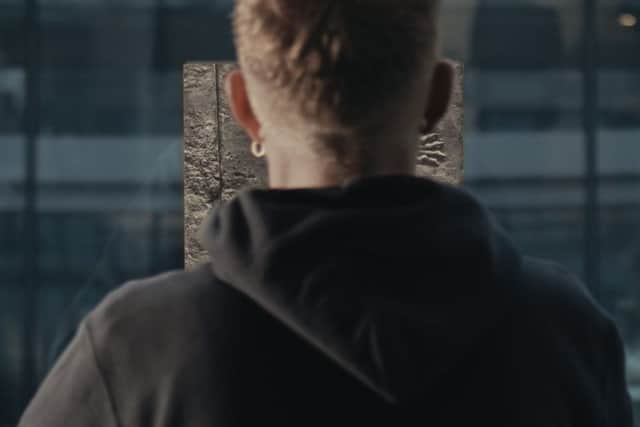Art reviews: Charlotte Prodger and Cathy Wilkes at the Venice Biennale


Charlotte Prodger: SaF05, Arsenale Docks, Venice ****
Cathy Wilkes, British Pavillion, Venice ***
The question of national representation is a vexed one these days, with artists and curators in Venice reaching for all forms of irony and inventiveness to distance themselves from it. Prodger makes no claims about representing anyone. In fact, her work stands out for its singularity of vision. To watch one of her films is to look out through her eyes: the camera on her iPhone becomes an extension of her body. Even when (as in the new film) she is working with a camera crew or with drones, we hear her voice softly giving instructions (“Can we go higher? Bring it down slowly…”) Indeed, the only voice in the film is hers, describing, remembering, confiding.


SaF05 takes its name from the identification tag given by conservationists to a maned lioness on a reserve on Botswana, a rare example of gender fluidity in the animal kingdom. While the lioness barely appears in the film, she haunts it, framing the other visual material: a journey by car across the Great Basin Desert in Utah, Prodger’s own feet on rock formations, winter on the A9.
Advertisement
Hide AdAdvertisement
Hide AdHer work has a radical honesty. When she tells us stories from her own life, they are rich in detail, and when she can’t remember a detail, she tells us so. She writes with clarity, knowing how to weight a story, whether of kayaking on Loch Long within a stone’s throw of the country’s stash of nuclear warheads, or a dream of bargaining with death for the return of a loved one.
Another aspect of this honesty is the way she shows her workings: the blank screen at the end of a clip, the flickering marks and smudges which turn out to be fingermarks on her laptop screen. Not everyone will appreciate this rawness, or the freely associative way words, sound and images weave around one another, but the world she shows us is rarely less than interesting, personal and engaging. Prodger isn’t asking us to share her journey, but if we take time to immerse ourselves in it, we start to notice the points where our journeys touch hers.
The question of national representation is even more vexed at the British Pavilion, this year occupied by Glasgow-based artist Cathy Wilkes. As one of the British Council’s selection panel told me, there was no point looking for an artist who could comment on the country’s situation as no one in January 2018 had any idea what it would be by May 2019.


Two years ago, the rooms of the pavilion teemed with the unruly sculptures of Phyllida Barlow. Wilkes’ installations are the opposite: delicate, restrained, quiet. The sepia-tinted spaces seemed to cast a hush over their audience, even on the busy Biennale preview days.
Neither the show nor individual works have titles. Wilkes never talks about her work, and any supporting text is, at best, allusive. While her human-like figures seem to invite narratives, emotions, one fears getting it wrong, failing to crack the code.
The pavilion opens into a grand room in which Wilkes has placed a large rectangular gauze-covered structure – a tomb, a bath? – and several diminutive figures with distended bellies. Small objects are placed carefully about: withered flowers, a dead grasshopper. At the centre of the third room is a female figure in a green dress, almost featureless, with misshapen legs and feet, a powerful, awkward presence. On the wall, a cut-out newspaper photograph shows children eating soup. There is a dirty towel, a washing up bowl with a pot scourer.
The next room has decorative china plates on the wall and an occasional table with a ripped lace cover: a once-grand house falling into ruin? The final two contain only paintings, muted abstracts which hint at landscape: just as we started to form some ideas, the work eludes us again.
Advertisement
Hide AdAdvertisement
Hide AdWilkes would have us reach our own interpretations. If one can relax into this view, it offers a certain freedom, like the open book with blank pages balanced on the tomb-like structure in room one. The mix of the open-ended and the highly specific begins to work on the imagination. Is it about desperation lurking beneath the surface of domesticity, or about giving voice to the marginalised, or about mortality – are the figures ghosts? If we can free ourselves from anxiety about finding the right answers, we might discover that the work opens up, offering all these possibilities and more. If not, one is in danger of being paralysed by the lack of clues. - SUSAN MANSFIELD
*The Venice Biennale runs until 24 November, for more information see www.scotlandandvenice.com, www.labiennale.org